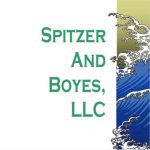E-ZINE
These terms are often interchanged, confused and misunderstood. This is manageable when the underlying technical concepts are understood and people agree on the meaning of the terms. As the song goes, this is often “easier said than done”.
ASME MFC-1M-1991 Glossary of Terms Used in the Measurement of Fluid Flow in Pipes (reaffirmed 1997) defines rangeability as “the ratio of the maximum flow to the minimum flow of a meter. Accuracy tolerance limits must be specified” (paragraph 3.8). Turndown is nowhere to be found in MFC-1M, but I vaguely remember reading (an ASME document?) where turndown and rangeability were terms that could be used interchangeably.
The definition of rangeability in the on-line ISA Comprehensive Dictionary of Measurement and Control effectively agrees with the ASME definition above. The definition for turndown is the “ratio of maximum plant design for flow rate to the minimum plant design flow rate” (http://www.isa.org/fmo/dictionary/define-a.html) which does not really address measurement per se.
In Flow Measurement (David W Spitzer, editor, ISA), contributors define rangeability as “the ability… to provide an output that is within the specified accuracy from some upper limit to some lower limit (page 178) and the “ability to cover a range of flow rates without exceeding the accuracy limits specified (page 320). Interestingly, the Accuracy/Turndown section of the target flowmeter chapter does not contain the word “turndown” but addresses operating the flowmeter within a range of flows.
The text Industrial Flow Measurement (David W Spitzer, ISA) defines turndown as “the ratio of the maximum flow that the flowmeter will measure within the stated accuracy … to the minimum flow that can be measured within the stated accuracy” (page 55). Rangeability is defined as “the ratio of the maximum full scale range to the minimum full scale range of the flowmeter” (page 56).
The above presents two potential problems — understanding the concept and communicating the concept. From a technical perspective, a flowmeter will perform within a stated accuracy over a range of measurements. In addition, the flowmeter span is usually adjustable. For example, a flowmeter calibrated for 0-100 lpm might measure 20-100 lpm within 1% of the actual flow rate, yet the full scale can be adjusted between 0-50 to 0-200 lpm. If you understand this, you understand the concept. (If not, you might benefit from one of my classes.)
Communicating the concept is a bit more tricky. Using the first two references, rangeability is 100/20 or 5:1. If rangeability and turndown are used interchangeably, the turndown would also be 5:1. In the latter reference, turndown is 100/20 or 5:1, and rangeability is 200/50 or 4:1.
The lesson in all this is — first and foremost — to understand the concept. Then make sure that whichever the terms used for communication are well-defined and understood by all parties.
The above references are available at ASME and ISA.
ISSN 1538-5280
